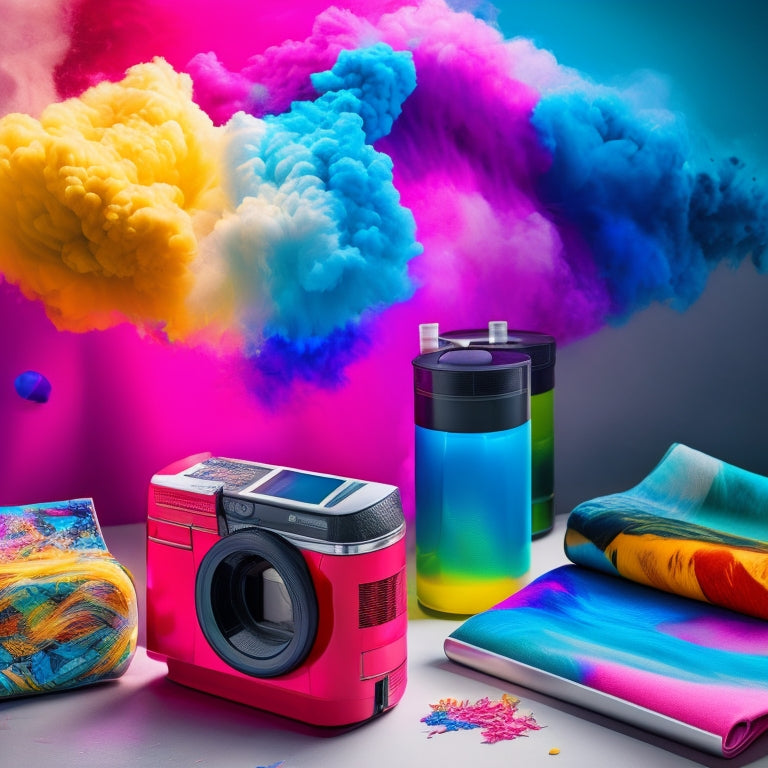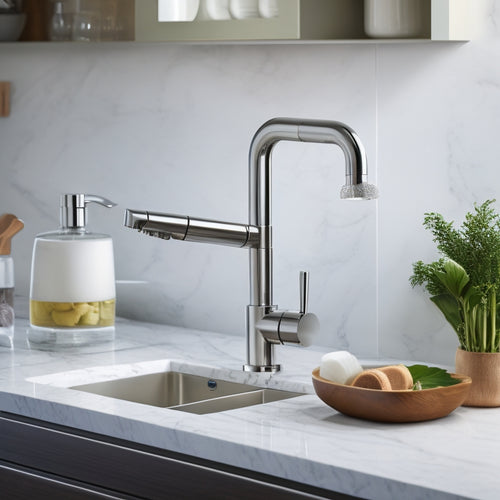
Discover the Art of Dye Sublimation Printing
Share
You're about to reveal a world of vibrant, long-lasting designs that will transform your creative projects into stunning masterpieces, all thanks to the magical process of dye sublimation printing. By combining a sublimation printer, specialized ink, and heat source, you'll be able to turn your designs into permanent, crack-resistant creations with continuous tones. From custom phone cases to wooden home decor, the possibilities are endless. With the right equipment and a little know-how, you'll be able to infuse your designs onto polyester-based items, wood, and more. As you dive deeper, you'll discover the secrets to revealing truly show-stopping designs.
Key Takeaways
• Sublimation printing transforms designs into vibrant, long-lasting masterpieces with crack-resistant and continuous tones on polyester-based items.
• The process involves printing sublimation ink on transfer paper, then applying heat and pressure to merge the ink with the material.
• Specialized equipment, including a sublimation printer, ink, paper, and heat source, is required to get started with sublimation printing.
• Sublimation printing offers endless creative possibilities, from custom phone cases to home decor, with safe and easy creation.
• It's essential to prioritize safety while working with sublimation printing, using protective gear like heat-resistant gloves and white cardstock.
Essential Tools and Materials
To immerse yourself in the world of dye sublimation printing, you'll need to gather a few essential tools and materials, including a reliable sublimation printer, high-quality sublimation ink, and specialized paper designed specifically for this process.
When it comes to sublimation ink, you'll have options from brands like Sawgrass, Epson, Hiipoo, Cosmos, and Printers Jack. For heat sources, consider Cricut AutoPress, Cricut EasyPress, traditional heat press, or even a convection oven.
Don't forget protective materials like white cardstock or butcher paper to guarantee safe handling. With the right sublimation papers, such as A-Sub paper or TruePix, you'll be ready to bring your designs to life.
Understanding the Process
As you explore the world of dye sublimation printing, you'll discover that this innovative process transforms your designs into vibrant, long-lasting masterpieces by harnessing the power of heat to merge ink with material. This introduction to sublimation reveals the benefits of this method, which produces crack-resistant designs with continuous tones. The process involves printing sublimation ink on special transfer paper and transferring it to an object using heat and pressure.
| Step | Description | Result |
|---|---|---|
| Sublimation ink on transfer paper | Design on paper | |
| Heat | Apply heat and pressure | Ink turns to gas |
| Transfer | Ink merges with material | Design embeds on object |
| Finish | Permanent, vibrant design | Long-lasting masterpiece |
Exploring Applications and Possibilities
You're on the brink of discovering a world of creative possibilities, where your vibrant designs can be unlocked into a wide range of polyester-based items, from fashion apparel to home decor accessories.
With sublimation printing, you can transform everyday objects into unique, personalized treasures. Imagine your artwork on custom sublimation blanks like mugs, phone cases, or jewelry boxes.
You can even apply sublimation on wood and MDF, adding a touch of elegance to your home decor. The possibilities are endless, and the best part is that you can create these stunning pieces safely and easily.
With the right materials and techniques, you'll be amazed at what you can achieve. So, get ready to unlock your creativity and explore the vast world of sublimation printing applications!
Comparing Techniques and Methods
When evaluating custom designs, it is important to weigh other techniques competing for your attention, but how do sublimation printing, iron-on vinyl, and screen printing compare in terms of application, durability, and design capabilities?
| Technique | Application | Durability | Design Capabilities |
|---|---|---|---|
| Sublimation Printing | Polyester items, wood, MDF | Permanent, crack-resistant | Vibrant, continuous tones |
| Iron-on Vinyl | Fabrics, garments | Temporary, prone to peeling | Limited color range, no gradients |
| Screen Printing | Fabric, paper, plastic | Long-lasting, but not permanent | High-resolution, detailed designs |
Sublimation printing offers unique advantages, but it is crucial to assess the strengths and weaknesses of each technique to select the best fit for your project. Take into account factors like the type of material, desired durability, and design complexity to make an informed decision.
Getting Started With Sublimation
To immerse yourself in the world of sublimation printing, gather your essential equipment, including a sublimation printer, ink, paper, and heat source, and get ready to explore a world of vibrant, crack-resistant designs.
Familiarize yourself with specialized sublimation materials, like A-Sub paper and Sawgrass ink, to guarantee excellent results.
Next, explore sublimation design software to bring your ideas to life.
Don't be afraid to tap into sublimation community resources, where experts and enthusiasts share valuable tips and tricks.
As you begin your sublimation journey, remember to prioritize safety by using protective gear like heat-resistant gloves and white cardstock.
With the right tools and knowledge, you'll be creating stunning, long-lasting designs in no time.
Frequently Asked Questions
Can I Sublimate on Glass or Ceramic Items Without a Special Coating?
You can't sublimate on glass or ceramic items without a special coating, as they won't accept the ink. Instead, prepare glass with a ceramic coating or treat ceramic items with a sublimation-friendly primer for successful results.
How Do I Prevent Color Shifting in Sublimation Prints?
You prevent color shifting in sublimation prints by ensuring Color Calibration is spot-on and using Ink Formulation specifically designed for sublimation, guaranteeing vibrant, true-to-life colors that won't fade or shift over time.
What Is the Ideal Temperature and Pressure for Sublimation?
You're about to discover the secret to flawless sublimation! For ideal results, you'll need to master Heat Calibration (between 380°F to 420°F) and Pressure Control (around 40-60 psi), ensuring a perfect bond between ink and substrate.
Can I Use Sublimation Ink in a Regular Inkjet Printer?
'You're tempted to try sublimation ink in your regular inkjet printer, but don't risk damaging it! Sublimation ink's unique formulation and printer compatibility issues make it incompatible with standard inkjet printers, so invest in a dedicated sublimation printer for safe and best results.'
How Do I Fix Common Sublimation Printing Mistakes, Like Banding or Blur?
You're troubleshooting sublimation printing mistakes! To fix banding or blur, you adjust print settings, recalibrate your image, and guarantee proper ink flow. Double-check your paper alignment, and don't forget to clean those printheads for crisp, vibrant results.
Related Posts
-

Stockpile Essentials: Must-Have Items for Home
I keep my home stocked with essentials to avoid last-minute trips and guarantee smooth daily operations. I prioritize...
-

Revolutionize Your Kitchen Sink With Must-Haves
Elevate your kitchen sink experience with must-have essentials that prioritize organization, efficiency, and style. S...

